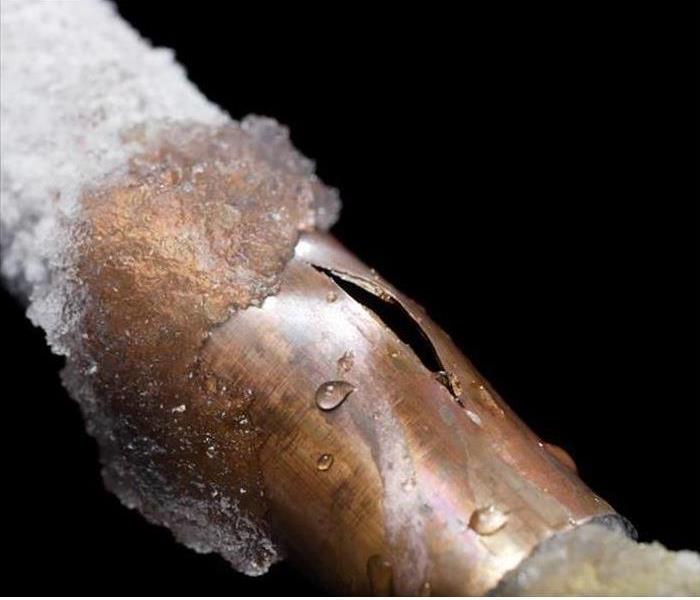Facebook RSS Check Out These Common Places for Water Leaks in Your Home
9/9/2021 (Permalink)
 A water leak can turn into a big problem. Contact the SERVPRO of Gillette, Sheridan team if you are dealing with any water damage.
A water leak can turn into a big problem. Contact the SERVPRO of Gillette, Sheridan team if you are dealing with any water damage.
No one wants to come home from work and be confronted with water where it shouldn’t be! But water damage is a real possibility when water escapes from places that were made to contain it.
If we were all-knowing, we wouldn’t have to worry about water leaks. But we’re not—and because of that, it pays to know how water might enter your home. Here are a few common sources of water damage:
Commode flapper. A commode flapper is a small circular piece of rubber that seals the water in the tank until the level is pressed. This is commonly referred to as flushing. The flapper is in use every time the toilet is flushed, and over time, the gasket can decay and leak. Many times, you can hear an audible leak coming from the toilet if the flapper is leaking.
Washing machine. Washing machines have a supply line, internal tub and drain line. Of course, there are many other components in between those system, and they are all designed to keep water in the tub or down the drain. Over time, water may escape and leak some of these components.
Clogged gutters. Gutters can be one of the main culprits in water damage. Properly designed and installed gutters are critical to moving the water from the roof to the ground where it can drain away. Keeping them clear of obstructions is critically important as water that overflows the gutter will find the wrong place to go. Obstructed gutters can have water backing up into fascia and soffits, down walls, and possibly leaking through the foundation.
Storm damage to roof. Many times when thunderstorms pass through they can leave roof damage. Wind can also break tree branches that land on your roof, possibly causing a break in the material that protects your roof.
Sewer line penetration. Pipes with age can be vulnerable to root infestation. Especially the old clay pipes that aren’t in use any longer. Once a tree root finds a source of moisture, it thrives and may invade that spot with more roots.
Disposal seal leaks. The seals in a garbage disposal stay fairly secure. However, excessive plunging to remove a clog can damage these seals if too much pressure is applied during the plunging process.
It’s important to stay current on your home maintenance. When you observe a defect, get it fixed immediately instead of waiting. It’s better to be proactive with a repair than to be faced with a restoration project from a major water leak.
If a water leak erupts into a big problem at home, you’ve got the best team in the business on your side. Contact SERVPRO today so we can get started.





 24/7 Emergency Service
24/7 Emergency Service